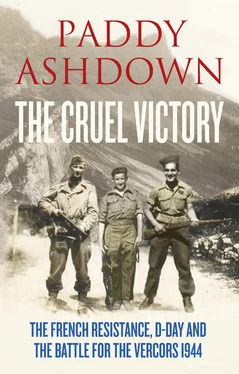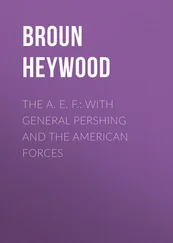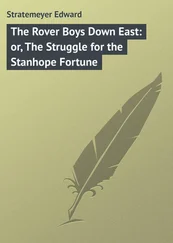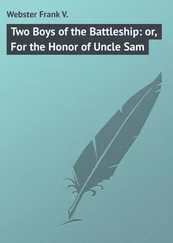Giraud knew perfectly well that de Gaulle was his deadly rival for the leadership of the free and the fighting French. But he also knew who was in the dominant position – he was, and by far. With the personal support of Roosevelt and the practical support of Eisenhower, he was in the place that mattered most – Algiers – and he commanded not only more French troops but also the only formed French units at that time fighting alongside their Allied comrades.
Giraud’s support inside France was less certain. But then so was de Gaulle’s. At the beginning of 1943, the Resistance was quarrelsome, fragmentary, diverse and riven by political rivalry. There were Gaullists to be sure. But also Giraudists. And many whose loyalties were to neither of the above, but to the Communists, the Socialists and even (still) to the Pétainists. The Secret Army was by comparison more Gaullist, but by no means uniformly so. Meanwhile, as de Gaulle understood very well, when it came to the actual government of France the relative position of the potential French leaders was going to be irrelevant, because the American President was planning to impose an Allied Military Government in Occupied Territories – known as an AMGOT. France would be governed for a period at least, as Italy had been, by foreigners. That was Roosevelt’s plan. That was what Giraud was acquiescing in. He, de Gaulle, would not.
But, at the start of 1943, de Gaulle’s chances of fulfilling his aim of being the leader who took his country back to freedom, self-government and eventually great-power status seemed ambitious to say the least. To succeed, he had to make himself the unchallenged leader of the free and fighting French inside and outside France. That meant going head to head with the most powerful man in the world, President Roosevelt, and wresting power from his favourite, Giraud. Then he had to make himself and his supporters so indispensable to the liberation of France that a French government would follow, not a government of transition drawn up in Roosevelt’s back office. And he had to achieve this with limited influence and only few assets to his name. These were the labours of Hercules indeed. But, remarkably, by the end of 1943, de Gaulle had accomplished all of them.
On 30 May 1943, de Gaulle arrived in Algiers, having finally negotiated terms for a partnership with Giraud. Five days after his arrival, on 4 June, de Gaulle took to the airwaves on Radio Algiers: ‘Everything is now in play – our army and our navy are playing a key part in a drama of indescribable importance. Our sacred duty is to show again what great things can be accomplished by the arms of France.’ Not since Lenin had been smuggled into Russia in a sealed train had such an insertion of poison been accomplished with such devastating consequences into the body politic of the ruling (in this case Giraudist) establishment. In a series of moves of cunning and ruthlessness, de Gaulle progressively sidelined and then summarily removed Giraud, leaving himself in sole charge. It would take until the D-Day landings of June 1944 for Roosevelt to come to terms with this reality, but there was little he could do. Giraud was the past. De Gaulle was now the future.
De Gaulle’s success in gaining control of the power structures in Algiers was replicated inside France. Francis Cammaerts, who had a ringside seat in the key months, saw the shift of opinion and remarked on its speed. ‘In March 1943, still, Gaullism was not necessarily the only salvation. By August 1943 it was. No one in the Resistance in France thought that there was any solution to the French future except through de Gaulle …’ This represented an astonishing success for the General for it gave him the means, not just to unseat Giraud, but to play a direct role alongside the Allies in his country’s liberation. No government in France could now be formed without de Gaulle’s consent and active participation. In short, if de Gaulle could build up the political effect of the Resistance and make it a potent military force, then Roosevelt’s plan for a transitional government in France would be a dead letter.
Such a project, however, was not without its complications. On the one hand, the Resistance gave de Gaulle legitimacy, but, as one sharp-eyed commentator put it after the war, de Gaulle ‘had to navigate between two contradictory pitfalls: on the one hand to convince the Allies of the necessity to support the armed struggle as a means of reinforcing the legitimacy of Gaullism; and on the other to control and channel the internal struggle in France in such a way as … more effectively to integrate its activities into the plans of the Allies and, above all, prevent, within the metropolitan Resistance, the emergence of “counter-forces” capable of contesting [de Gaulle’s] capacity to govern the country after the Liberation’.
De Gaulle’s second problem was that the French Resistance was held in very low regard by the British and American authorities. Churchill loved France and recognized its claims to great-power status. But he was not averse to making unflattering comparisons between the French Resistance and Tito’s Yugoslav partisans, who were tying down some twenty German divisions in bloody guerrilla warfare. Roosevelt, on the other hand, had something close to contempt for France, seeing it as a decadent imperial power which lacked the moral fibre Britain had shown in the early years of the war. On the question of the effectiveness of the 1943 French Resistance (or rather lack of it), the two leaders and their staffs were united: it could not in 1943, and would not in 1944, be able to deliver anything of weight to the coming battle on French soil. It was this opinion that de Gaulle had, by hook or by crook, to change.
Back in March 1943, the British War Cabinet had met to take the first of several decisions establishing the priorities for the supply of arms and equipment to partisan forces in Europe. It put France as third strategic priority behind the Italian-held islands, Corsica and Crete (taken as one) and Yugoslavia. These priorities were personally reconfirmed by Churchill himself in August and November of that year. A Cabinet paper at the end of March put total Resistance strength in France at 175,500. Yugoslavia, with a much smaller population, had partisans, they estimated, numbering 220,000. The paper included an annex showing Resistance strengths as a proportion of what it referred to as ‘net male population’. This showed that 30 per cent of ‘available’ men were in the Resistance in Norway, 6 per cent in Denmark and Poland, whereas in France, no doubt because of its internal divisions, it was just 3 per cent.
An SOE assessment in May and June 1943 pronounced the French Resistance ‘at its lowest ebb’ and added that its forces ‘could not be counted on to be a serious factor unless and until they were rebuilt on a smaller and sounder basis’. The paper ended by warning that this would require a ‘total reorganisation and reformation’. London’s reaction to the deficiencies in the Resistance organization was to send out tripartite ‘missions’ made up of representatives of France, Britain and the US with the task of assessing what needed to be done to mend the gaping holes left by Gestapo arrests and to create a new structure of organizational control. One of these missions in October 1943 estimated Resistance strength in the maquis of the Rhône-Alpes as 2,300 and described the Vercors camps they had visited as ‘modestly equipped and armed, adequately turned out given the very difficult conditions, good morale’.
Having elbowed Giraud out of the way, de Gaulle was now free to take further steps to reform the command and control of the Resistance by setting up Committees of Liberation in all the French departments and naming military delegates for each of the three administrative levels of the country – national, zonal and regional. The General was beginning to assemble a government for France, though it would take long tortuous months before first the British and then, finally and reluctantly, Roosevelt gave formal recognition to this. Over succeeding months this structure was progressively strengthened, in large part prompted by the fact that, by the end of November 1943, it was clear that an invasion of France was being planned and that, citing security as the reason, the British and Americans were going neither to involve, consult nor indeed even inform de Gaulle about what they had in mind.
Читать дальше












